There are many ways to figure out how much cake batter you need for different sized cake pans plus there’re easier methods instead of just counting cups of batter.
I get this question a lot: How do I figure out how much cake batter I need for a particular pan? It really can be tricky and sometimes confusing. With all the different sized pans, it’s hard to know how many cups of batter, or how many batches of batter you’ll need to fill them.
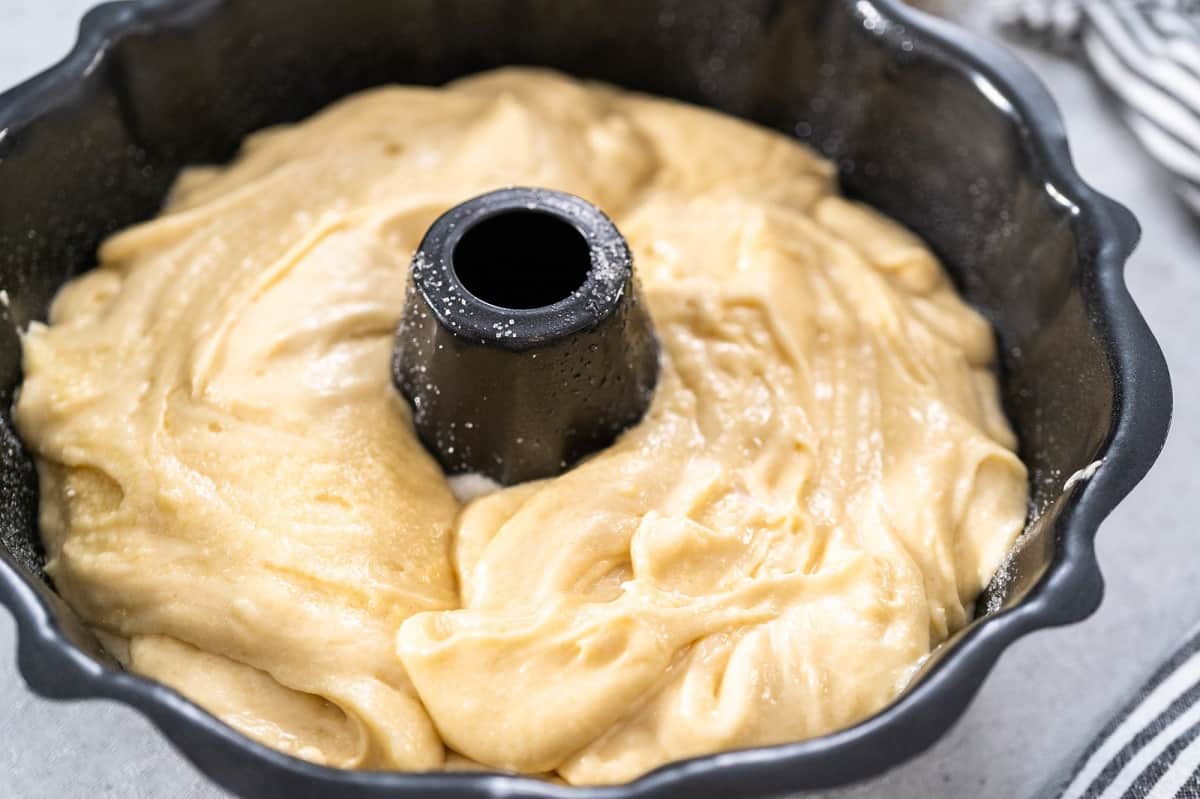
This post includes tips for estimating the amount of cake batter you should put into your pans, specifically for some of the most popular sized pans, plus ways to estimate the amount need for other cake projects.
In this post, I’m going to give you multiple ways to estimate the amount of cake batter you’ll need for your cake. I’m also going to add in a handy chart, so you can see right away, how much batter you’ll need for specific sized pans.
(Oh and keep an eye out for a free printable guide you can download as well.)
I’ll go through how I personally like to estimate how much batter to use (it’s a much easier way in my opinion), give you some examples, and then direct you to another handy chart if you’d like to estimate it a different way than I do.
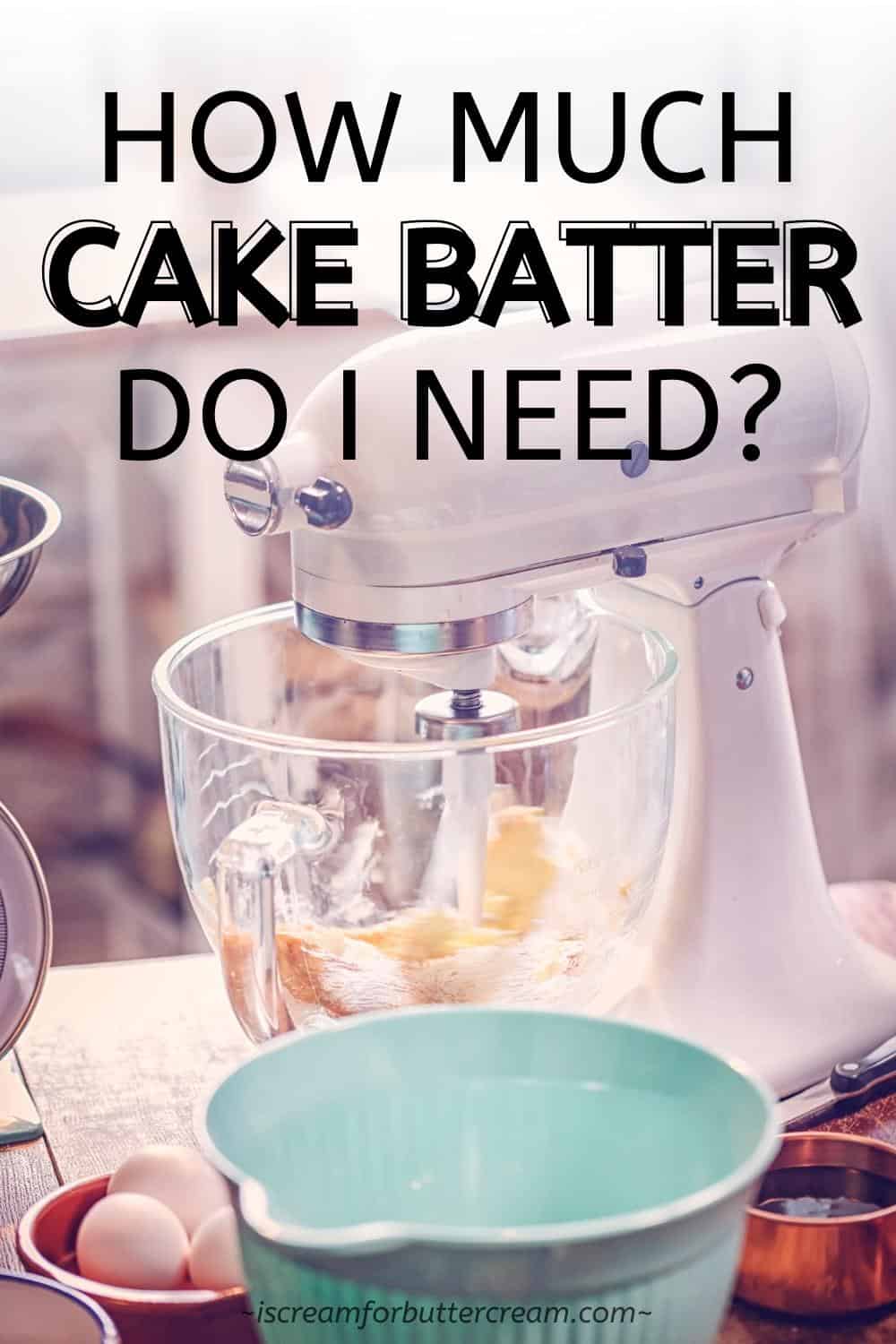
Jump to:
Now let’s get to all the different options you have to estimate how much batter you need plus the method I think is the easiest.
As an Amazon Associate, I earn from qualifying purchases.
Different Ways to Estimate the Amount of Cake Batter You’ll Need:
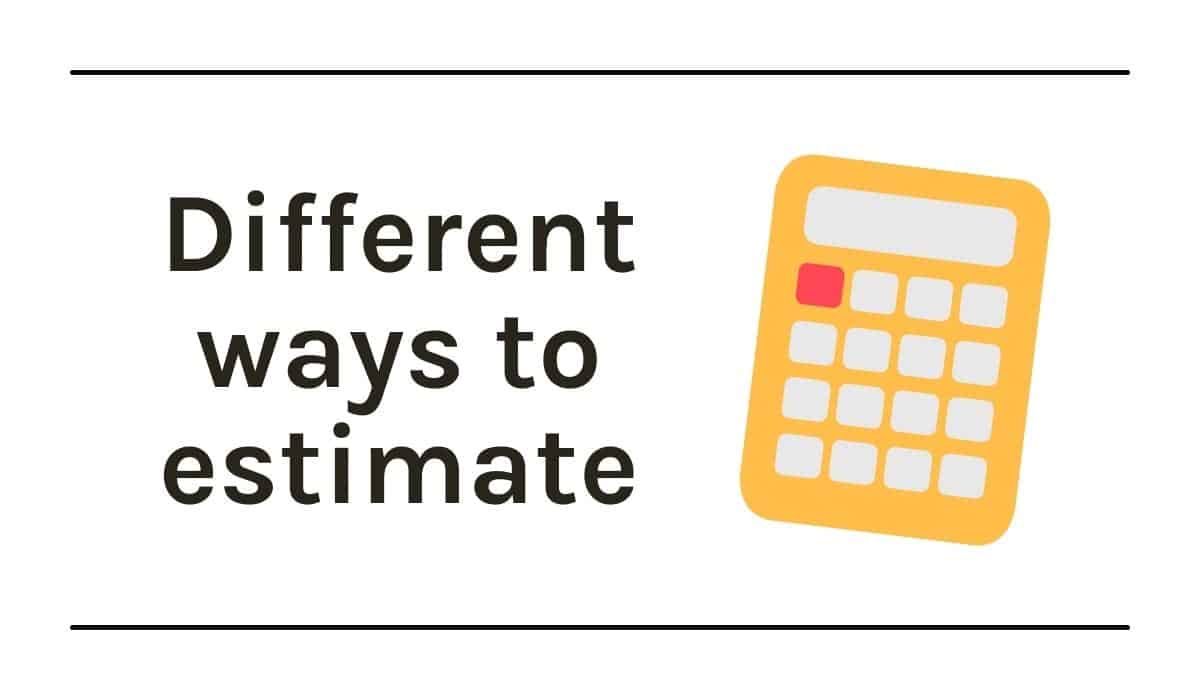
There are a few ways to estimate the amount of cake batter you’ll need:
- Estimating by cups, which is essentially using a chart that will tell you how many cups of batter you’ll need for each pan.
- Experience and just winging it, which means just learning by experience and essentially using your best guess of how much batter you’ll need).
- My method, which is kind of a combination, of guesstimating how much batter is needed based on how many cake recipe batches will fill the pans.
Let’s go into detail for each method:
Estimating by Cups:
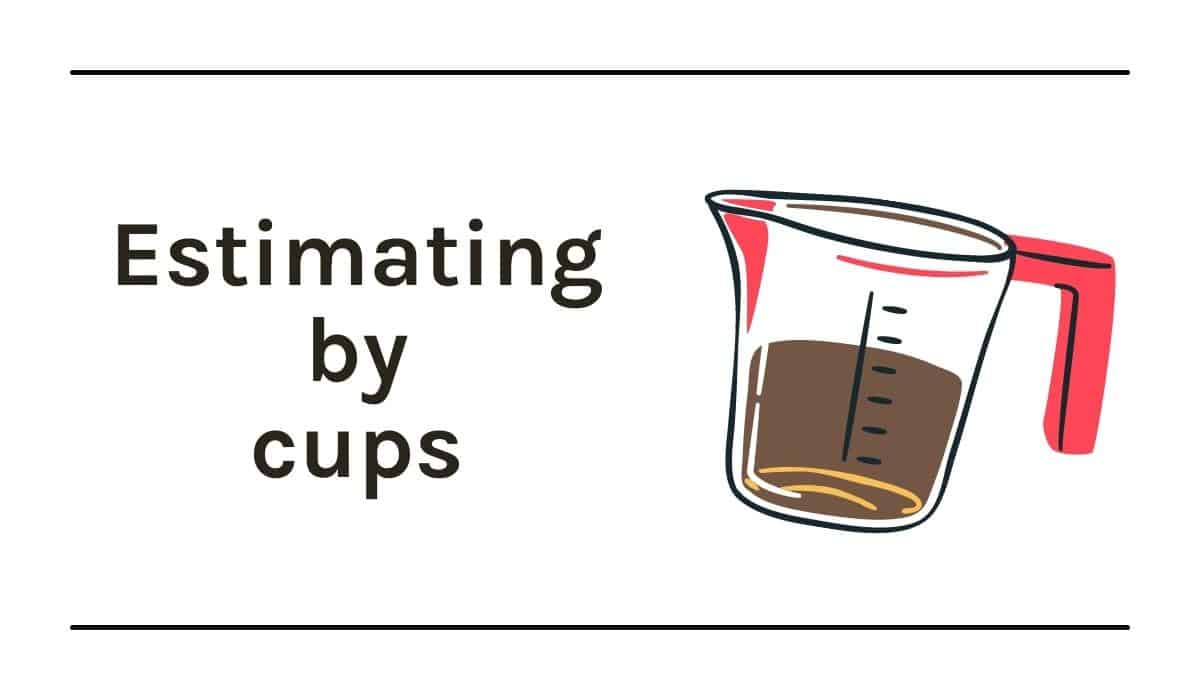
This is the way I think most people probably go by and this is what most people ask me for.
Essentially you have to figure out how many cups your cake recipe makes. Then you go to a chart for the pans you’ll be baking in and figure out how many cups of batter you’ll need for those sized pans.
Then you’ll figure out how many cake recipes you’ll have to make based on the number of cups those particular pans require.
Here is a link to the chart Wilton has for this: Wilton’s Cake Batter Chart
(I have big issues with the cups method, so don’t forget to keep scrolling to see why it’s not my preferred method.)
Experience and Winging It:
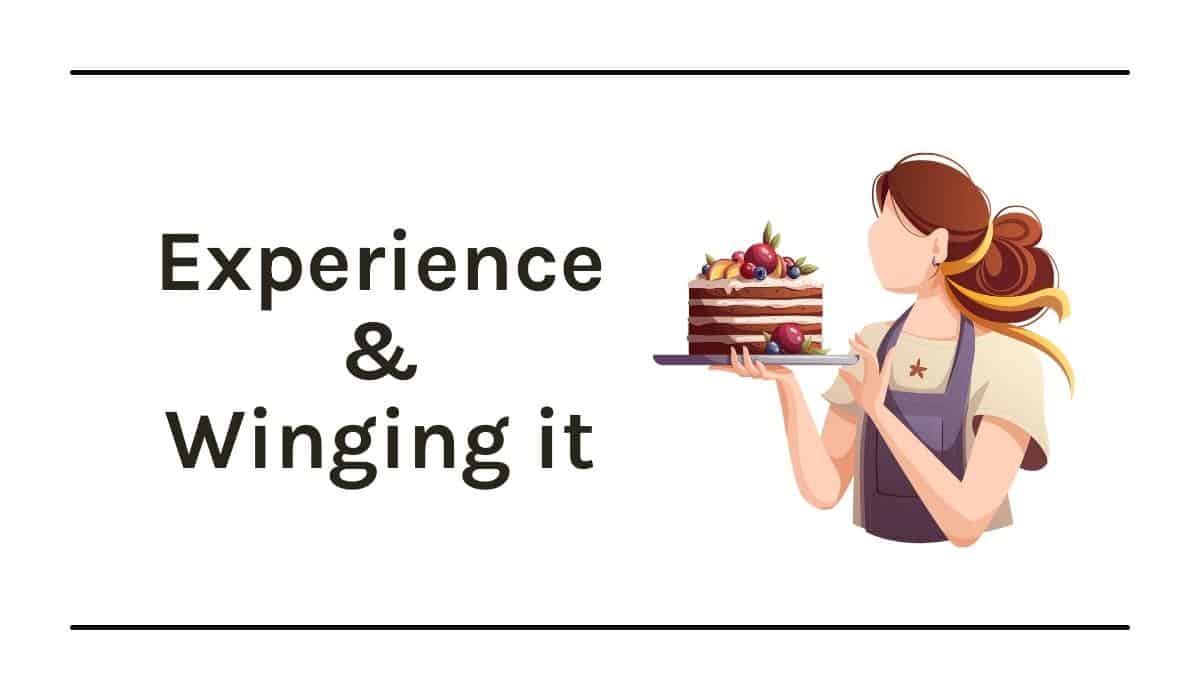
Another way of estimating is basically something you’ll get to after you’ve done it a while. You just figure out how much to make and how full you should fill your pans etc.
It’s not going to help you much right now if you’re just starting out, but I did want to throw this one in here, so you know if you’re just starting out, that it does get easier to estimate.
The Easiest Method (and what I personally use):
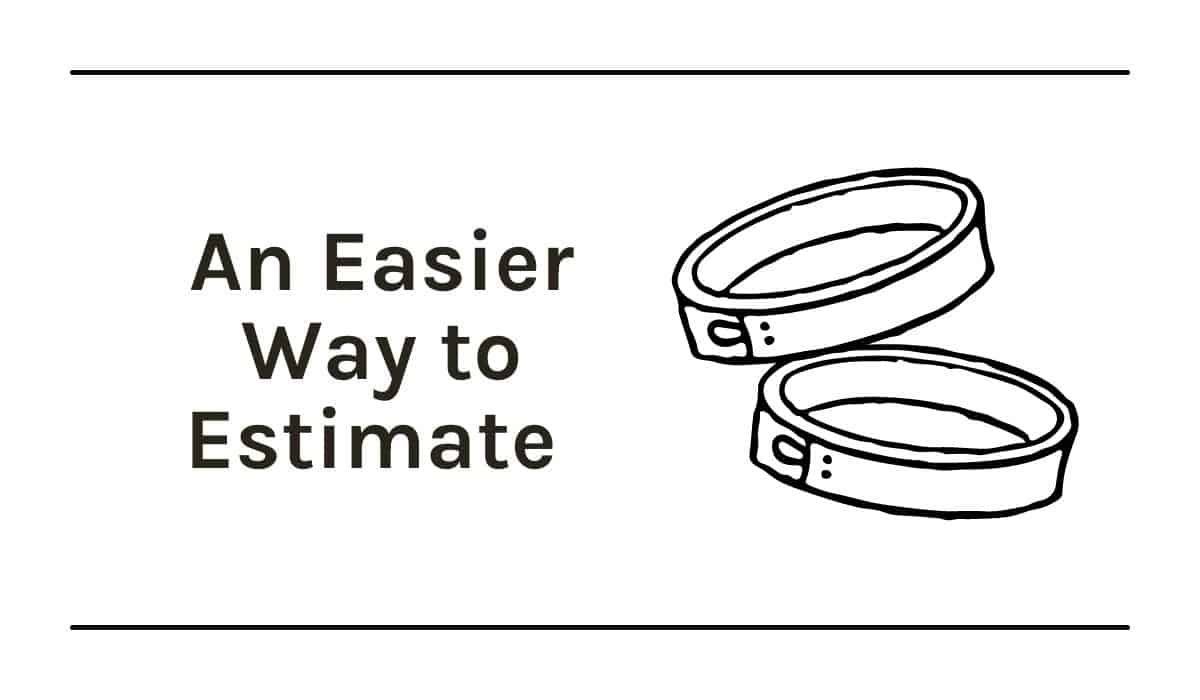
First I’d like to say that my way isn’t exact. You’re essentially guesstimating, but you get pretty dang close and it’s less complicated in my opinion.
If you want closer to exact measurements, then you might use the ‘estimating by cups’ method in an earlier section of this post or do a google search for equations on how to figure out the volume of each pan.
There are spreadsheets online that will do that for you. That’s not my way though.
Here’s my issue with the ‘cups’ method:
The issue I have with the cups way of estimating is first, you may not always know how many cups of batter your cake recipe makes.
- Essentially you’ll have to make a recipe first and measure out the number of cups. That may not be any big deal, but who really thinks to do that? I don’t…and every time I do, it’s too late…I’ve already added it to the pans.
- Another question to ask is, what recipe are those charts based on? Some cake batter recipes are thinner and some are really thick.
- Some cake recipes make more batter and some make less. My recipes seem to be thicker and make a bit more batter than usual so that they’ll rise up and level with the top of the pan.
- Some recipes bake up higher and some you have to fill your pan a little more. Some people use cake mixes and some people use scratch cake recipes.
My point is that even though the cups method seems exact….I really don’t know how it could be that exact.
I figured even if I made a recipe, and figured out how many cups of cake batter the recipe contained, then I’d still have to figure out how many recipe batches to make based on the number of cups a particular cake pan required.
It’s like it’s just adding an additional step when you have to count the cups.
I’ve always just had more luck doing it my own way, which I’m about to share with you. It’s not rocket science really, but it was just born out of a need to figure out an easier way to estimate the amount needed rather than counting cups.
I just didn’t want to count cups and deal with fancy equations.
Call me lazy, but being super exact just isn’t that important for me…I don’t care about getting the exact volume. I just want to get as close to an estimate as I can in the least amount of time possible.
So here’s my method:
I essentially just go by recipe batches. What’s that mean? Well, one recipe is one batch.
Generally, one cake recipe will make two, 8″ round cake layers, or a 13×9 inch cake layer. Sometimes it can make three, 6″ round cake layers, although those layers might be a little thinner.
Most cake recipes make that amount, but you’ll want to adjust if your recipe makes three 8″ round cake layers or some other variation. Just know what you’re starting off with.
For me, I’ve found that knowing the base of how much my recipe makes as far as what pans it will fill (not cups), really helps me guesstimate how much batter I’ll need for a particular pan.
I also think it’s important to know your recipes. My cake recipes tend to make a bit more batter. Some of my cakes use the reverse creaming method (you can find out more about that in this post: Types of Mixing Methods), and with that method, the cakes seem to be a bit flatter on top and I like to have more batter in each pan to get a taller cake layer.
So it’s important to know how your cake recipe works best. Know about how tall your particular cake recipe rises, so you’ll know how high to fill your pans.
Examples when using the recipe batch method:
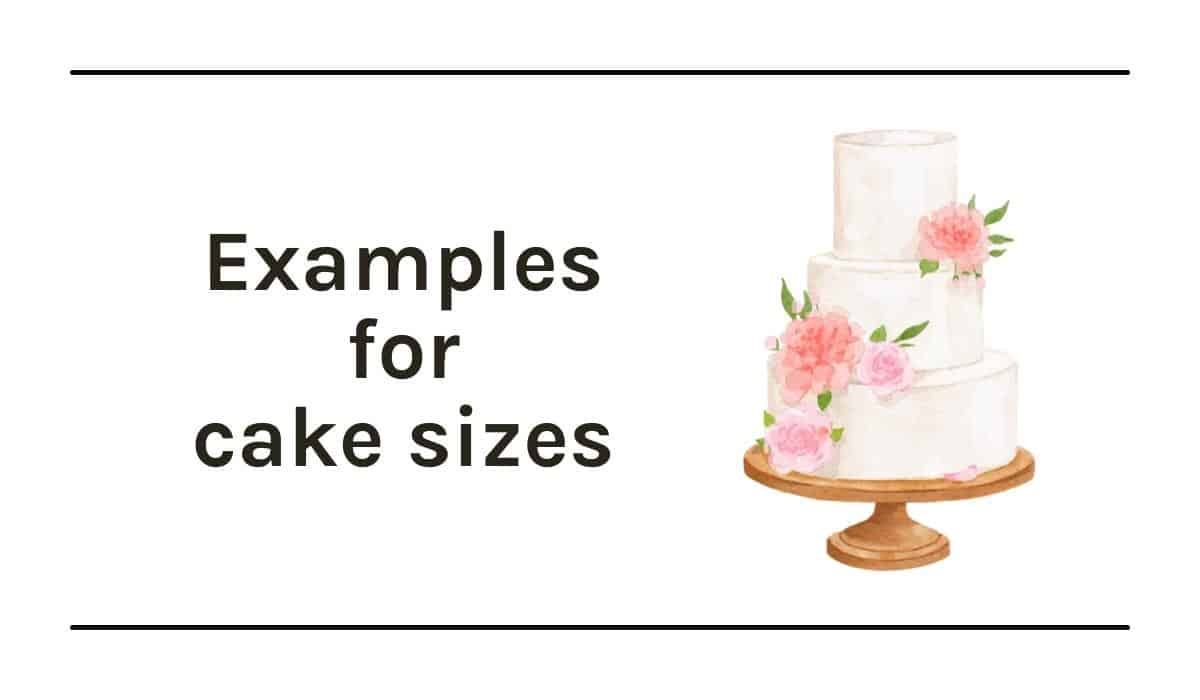
So let’s try some examples here to see how I would estimate the amount of cake batter for various types of cake pans. (Don’t forget there’s a handy chart below and also a guide you can download for free.)
Example 1: Two, 8 or 9 Inch Round Cake Pans
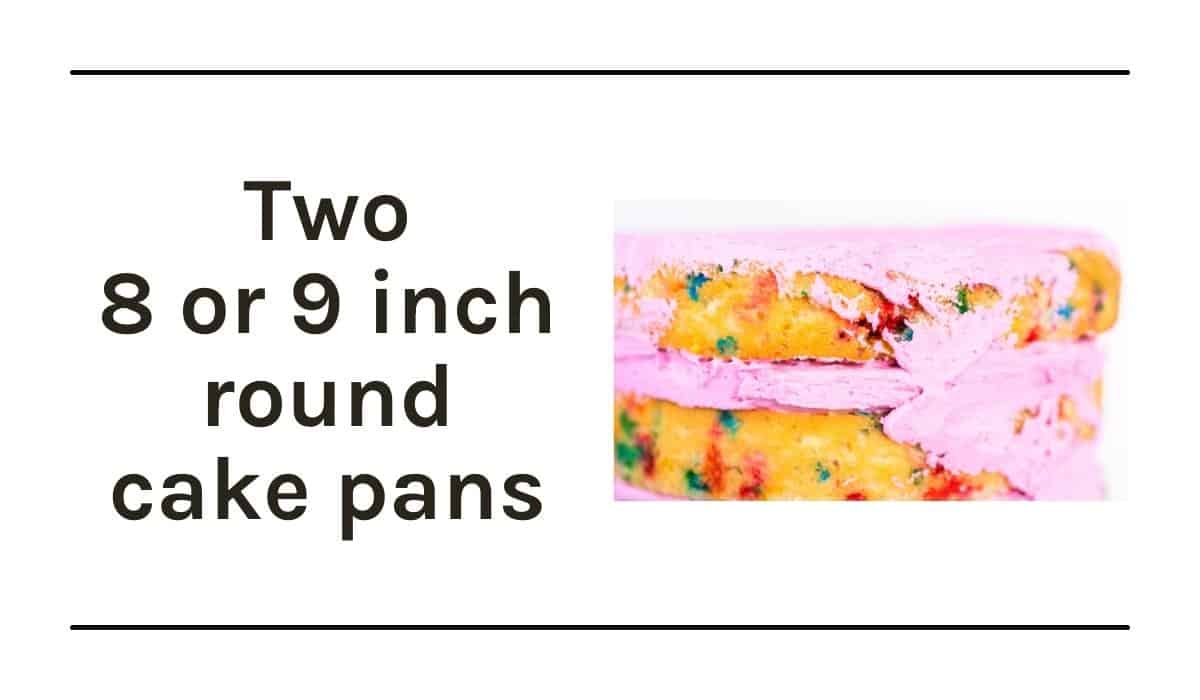
Most general cake recipes are written to fill two, 8-inch, or 9-inch round cake pans. So, the recipe should most likely be good to go as written. If it’s written for three layers, then you’ll have some leftover batter.
If the recipe is for two, 8-inch round cake layers and you have 9-inch pans, it will still be ok. Just know that the layers will come out a bit thinner and you may need to bake them for less time, so watch them carefully.
We’ll talk about adjusting a two-layer cake recipe for three pans later.
Example 2: 13×9 Inch Cake
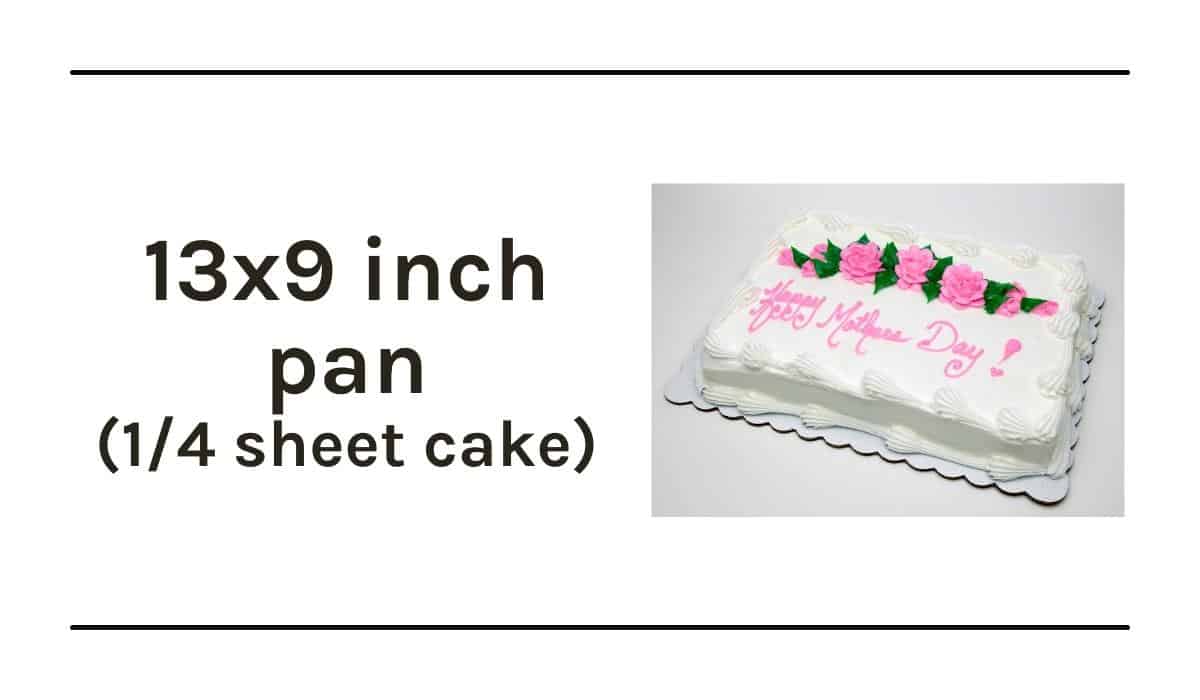
A 13×9-inch pan is basically a ¼ sheet cake. Most cake recipes that are written for two, 8-inch, or 9-inch cake layers will use the same amount of batter. So, in general, you won’t need to make any changes there.
Example 3: Half Sheet Cake

Since a quarter sheet cake is a 13×9 inch cake, if we’re making a half sheet cake, then we’ll essentially need double the amount of batter, because it’s like making two, 13×9 inch cakes.
Since one cake recipe batch (most of my cake recipes) makes enough for one 13×9 inch pan, you’d need two recipe batches to equal a half sheet cake, therefor you’ll just double the cake recipe to get the proper amount for a half sheet cake. See what I did there?
Example 4: Three 8-inch round cake layers:
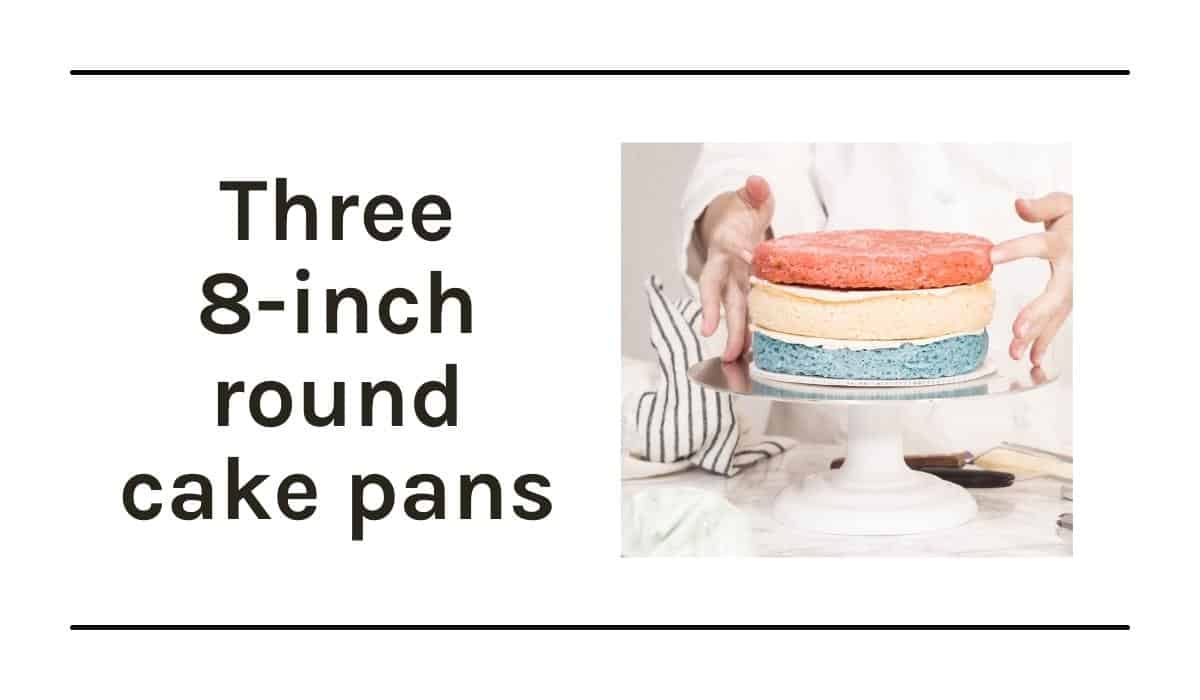
If I’m making a cake for my family, then I’ll just make two layers, but if I’m making a custom decorated cake or I want it to look fancier, then I’ll make three cake layers. It just looks taller and more elegant.
So what do you do when you want three layers instead of just two? Well, most of my recipes (and most other general cake recipes) make enough cake batter to fill two, 8″ round cake pans.
So, you’ll just need another half batch of cake batter to make up the difference. Essentially, you’ll just mix up a recipe batch and a half.
You don’t need to mix up the batches separately. Just take your recipe and add another half to it. Here’s what that’ll look like below:
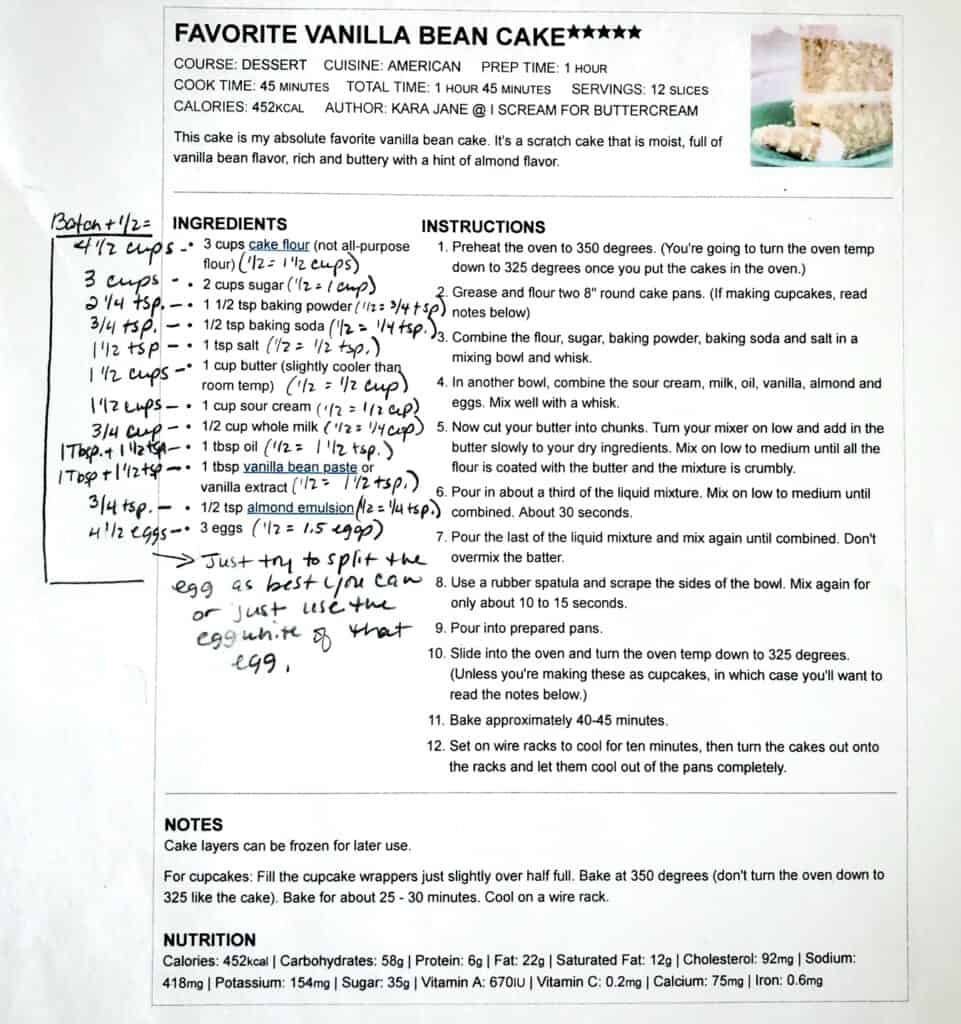
Using a recipe and a half (if the original recipe was written for two, 8-inch or 9-inch round pans) will get you three layers.
Example 5: Two, 10″ round cake layers:
If you want to make two, 10-inch round cake layers, the concept is the same as above. You’ll just use a recipe batch plus a half (if the original recipe was for two, 8 or 9-inch round cake layers).
Example 6: Two-tiered cake – Top tier = 8-inches and Bottom tier = 10-inches (three layers each tier)
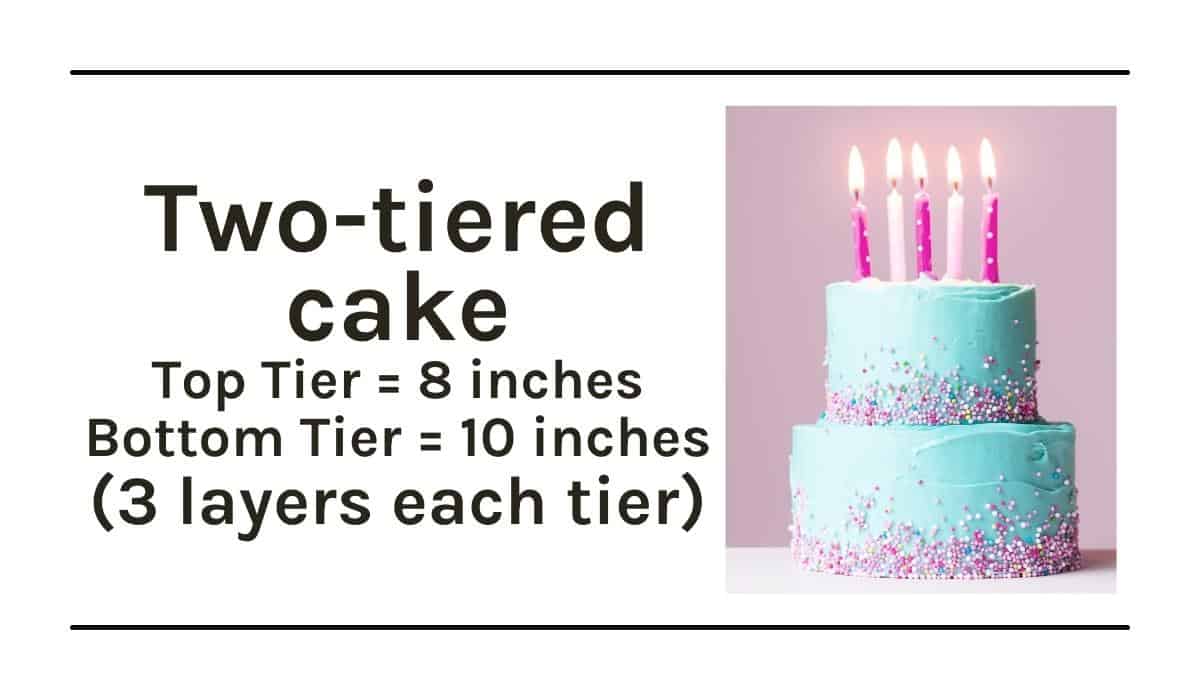
Ok, it gets a little more confusing if you’re making multiple cakes and it will depend on whether you want to mix up all the batter at once, or just do one tier at a time. I tend to sort of mix things up a bit and I’ll tell you what I mean.
For this cake you’ll need:
- Three, 10-inch cake layers (for the bottom tier)
- Three, 8-inch cake layers (for the top tier)
Here’s how you can break that down:
- So as we talked about in example 5, you’ll need a recipe and a half for two, 10″ round cakes.
- If you just doubled a recipe, then you could get three, 10″ cakes. (One recipe = enough batter for 16 inches of cake pans…that’s two, 8″ pans. So a double batch would = enough for 32 inches of cake pan, which would be enough for three, 10″ pans.)
Now, if you don’t have three, 10″ pans, or your oven isn’t large enough to hold three, 10″ cake pans, then you can still mix up two batches of batter and just fill up two, 10″ round cake pans plus an 8 inch round cake pan. You just have to sort of work with what you have.
So, at that point, you’ll still need to make one more 10″ cake layer plus two more 8″ layers. That means you can make another double batch of cake batter (which equals 32 inches of cake pan space) and that would give you plenty for those three pans (plus maybe a bit for a few extra cupcakes.)
Essentially you need to look at how many pans you have and how much oven space you have first because you could mix up a ton of cake batter, but then how will you fit it in your oven, or what if you run out of pans?
It’s really best to bake the batter right after it’s mixed or your cake may not rise as well, so just plan it out first and figure out what layers you’ll bake at each step in the process.
If you have to chill cake batter, you’ll want to check out this post for helpful tips: How Long Does Cake Batter Last
Example 7: Two-tiered cake – Top tier = 6-inches and Bottom tier = 8-inches (three layers each tier)
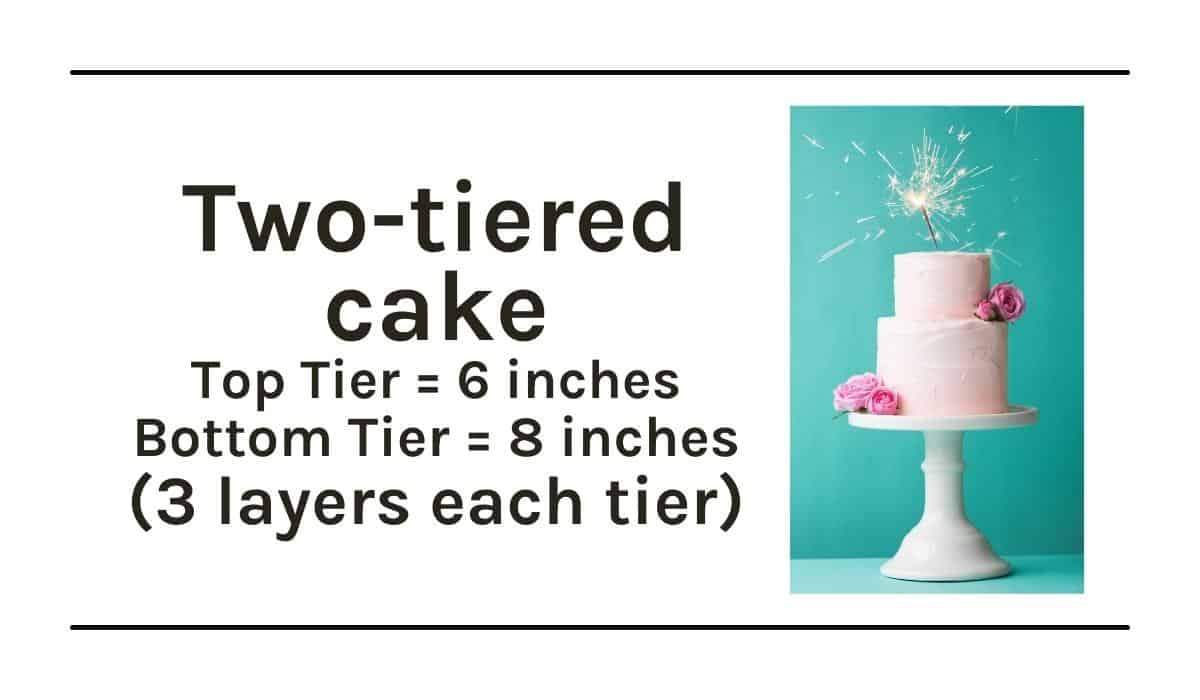
Ok, this one is similar to the example above. (Go and read that for more details and how I came up with these numbers and what you need to plan for before mixing up the batter.)
For this cake you’ll need:
- Three, 8-inch cake layers (for the bottom tier)
- Three, 6-inch cake layers (for the top tier)
Here’s how you can break that down:
For the three layers of 8″ round cakes, you’ll want to mix up a batch and a half of cake batter. (Make sure to go up to example 4 to see how that’s done.)
For the three, 6″ cake layers, you can do a couple of things. You can mix just one batch of cake batter and use that, but your cake layers will be a little thinner, which is fine if you’re okay with that.
If you want thicker layers, then you can just use a batch and a half as you did with the three, 8″ cake pans, but you’ll have a bit of cake batter left over for some cupcakes.
If you only have two of each size pan:
A different way to do this…and this works especially if you only have two pans of each size, is to just mix up one batch of cake batter and bake two layers of the 8″ round cakes first.
Then mix up another batch and do the last 8″ cake pan and a 6″ cake pan. Lastly, mix up one more batch and bake the last two 6″ pans. You’ll have a bit more batter left over using this method, but sometimes you have to do things differently if you only have two pans for each size.
Example 8: Square Pans or other Odd Shaped Pans
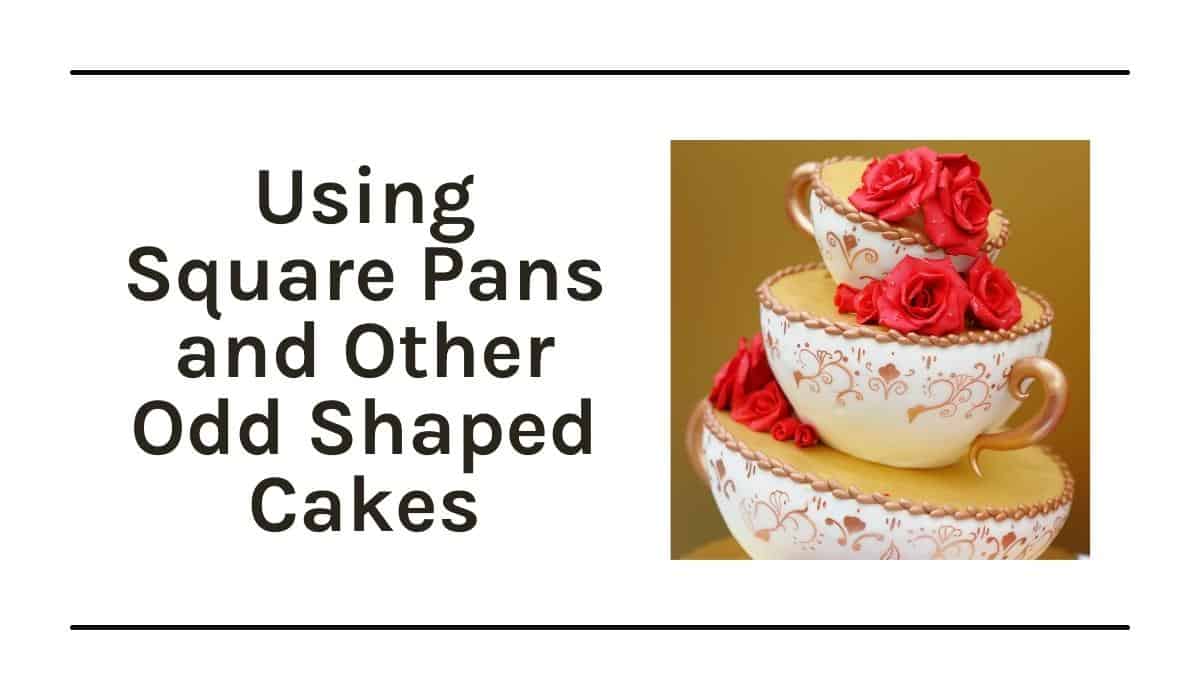
When you’re estimating the amount of batter you’ll need for square pans, it’s going to be different. I tend to add an extra half-batch to be on the safe side because you’ll need more batter for those. (For example, an 8″ square pan is going to need a bit more batter than an 8″ round pan.)
If you have a novelty pan (like a football pan or ball pan), it will usually tell you how much batter you’ll need for it with the pan instructions.
Now, this method of mine is not exact, but all I’m saying is that nothing is going to be exact. I always err on the side of making a bit too much though because I feel like that’s the safest way to go.
Recipe Batch Amount Chart:
Here’s a quick chart that will be helpful when estimating how much batter you’ll need if estimating by recipe batches, not cups: Make sure to read the post above that explains the method behind these amounts and just know these are estimates…nothing is exact.
(There’s also a printable reference guide below that you can print and keep for later.)
| Pan Size | Recipe Batch Amount (when using a standard cake mix or recipe that calls for two, 8″ round pans) | Notes |
|---|---|---|
| 2, 8″ round pans (2 inches deep) | -1 cake mix, or -1 cake recipe batch | Average cake mixes and recipes call for either two 8″ pans, two, 9″ pans or a 13×9 pan. Make sure to read the recipe carefully. |
| 3, 8″ round pans (2 inches deep) | -1 ½ cake mix, or -1 ½ cake recipe batch | If you want to double the recipe, you can do that, but you will have leftover batter. (*See example on how to cut a recipe in half lower in the post.) |
| 2, 6″ round pans (2 inches deep) | -1 cake mix, or -1 cake recipe batch | You will have extra batter, which you can use it to make a few cupcakes. |
| 3, 6″ round pans (2 inches deep) | Either: -1 cake mix, or -1 cake recipe batch Or: -1 ½ cake mix, or -1 ½ cake recipe batch | If you use one cake mix or one cake recipe batch and split it between three, 6″ pans, the cake layers will be a little thinner. If you use 1 ½ cake recipe batches, then you will get thicker layers, but may have a bit of batter leftover, which you can always use to make a few cupcakes. |
| 2, 10″ round pans (2 inches deep) | -1 ½ cake mix, or -1 ½ cake recipe batch | If you want to double the recipe, you can do that, but you will have leftover batter. (*See example on how to cut a recipe in half lower in the post.) |
| 3, 10″ round pans (2 inches deep) | -2 cake mixes, or -2 cake recipe batches | |
| 13×9 inch pan | -1 cake mix, or -1 cake recipe batch | Average cake mixes and recipes call for either two 8″ pans, two, 9″ pans or a 13×9 pan. Make sure to read the recipe carefully. |
| Half sheet cake | -2 cake mixes, or -2 cake recipe batches | A half sheet cake is essentially two 13×9 inch cakes. |
| Two-tiered cake (Bottom tier: 3, 10″ round cake layers; Top tier: 3, 8″ round cake layers) | Bottom Tier: -2 cake mixes, or -2 cake recipe batches Top Tier: -1 ½ cake mix, or -1 ½ cake recipe batch | If you only have two pans of each size, you’ll have to mix up double recipe batches and first do two, 10″ pans plus an 8″ pan. Then mix up another two batches and bake two 8″ pans and one 10″ pan. |
| Two-tiered cake (Bottom tier: 3, 8″ round cake layers; Top tier: 3, 6″ round cake layers) | Bottom Tier: Top Tier: -1 ½ cake mix, or -1 ½ cake recipe batch Top Tier: Either: -1 cake mix, or -1 cake recipe batch (for thinner layers) Or: -1 ½ cake mix, or -1 ½ cake recipe batch (for thicker layers) | If you only have two pans of each size, you’ll have to mix up one recipe batch and first do two, 8″ pans. Then mix up another batch and bake the last 8″ pan and a 6″ pan. Last, mix up one more batch and bake the last two 6″ pans. You’ll have a bit of batter left over this way, but if you only have two pans of each size, it’s an option. |
| Square pans & other odd shaped or novelty pans | For square pans, go with the estimates above, but if they’re large than 8″, it’s best to add a little more batter (maybe another ½ recipe batch.) | For novelty pans: Look on the box or packaging the pan came with. Many times it will tell you how much batter you’ll need. |
Free Printable Reference Guide:
Feel free to print the guide below, so you can always have it on hand when you need it.
Just click the graphic or the link below it to print it.
I hope this was helpful and I’m willing to help troubleshoot any cake batter estimates you have questions about, but just know that we are all just making our best-educated guesses and the more you do it, the better you’ll get at estimating how much batter you’ll need.
Other posts you might like:
Don’t forget to pin it below!
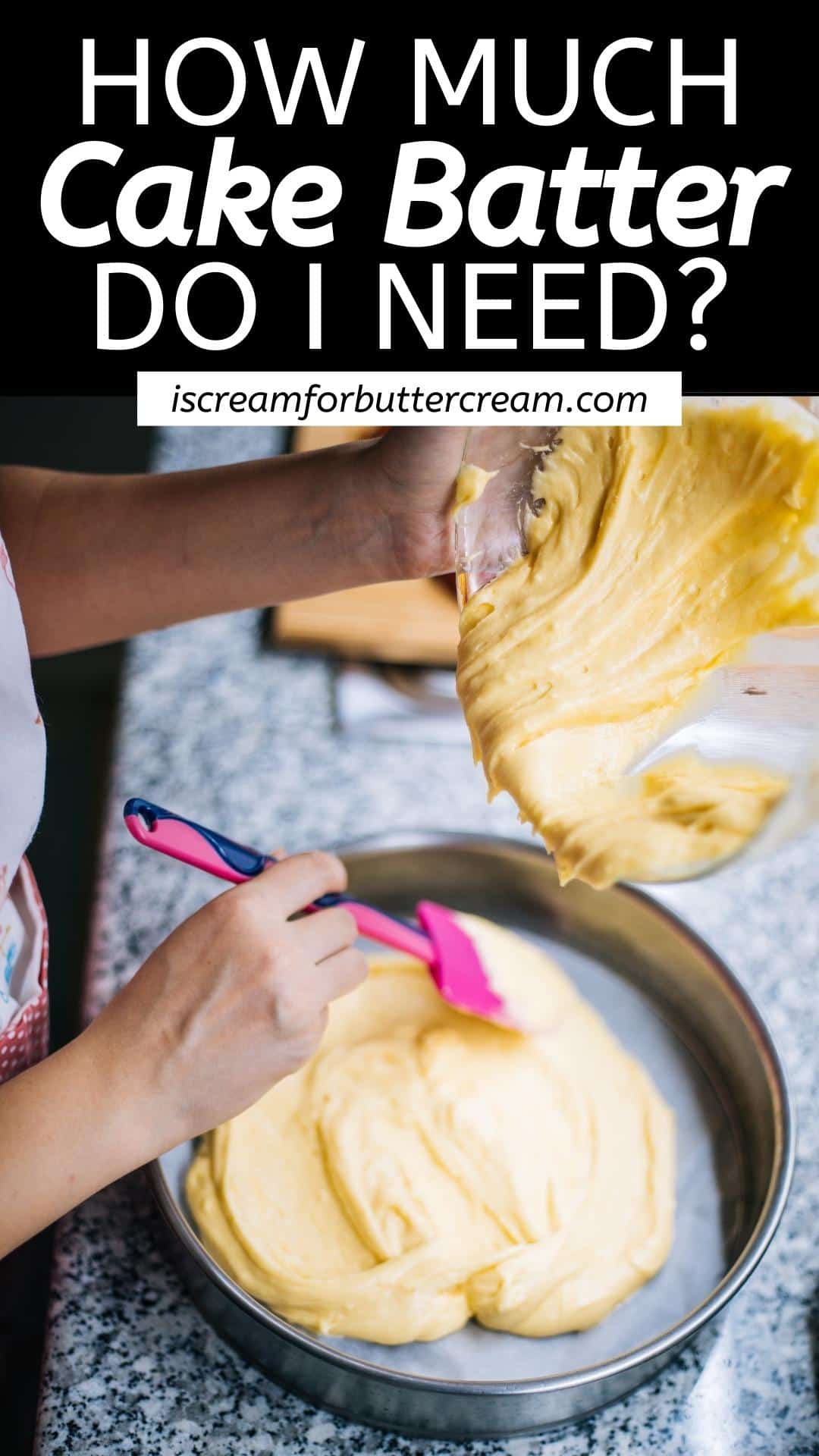

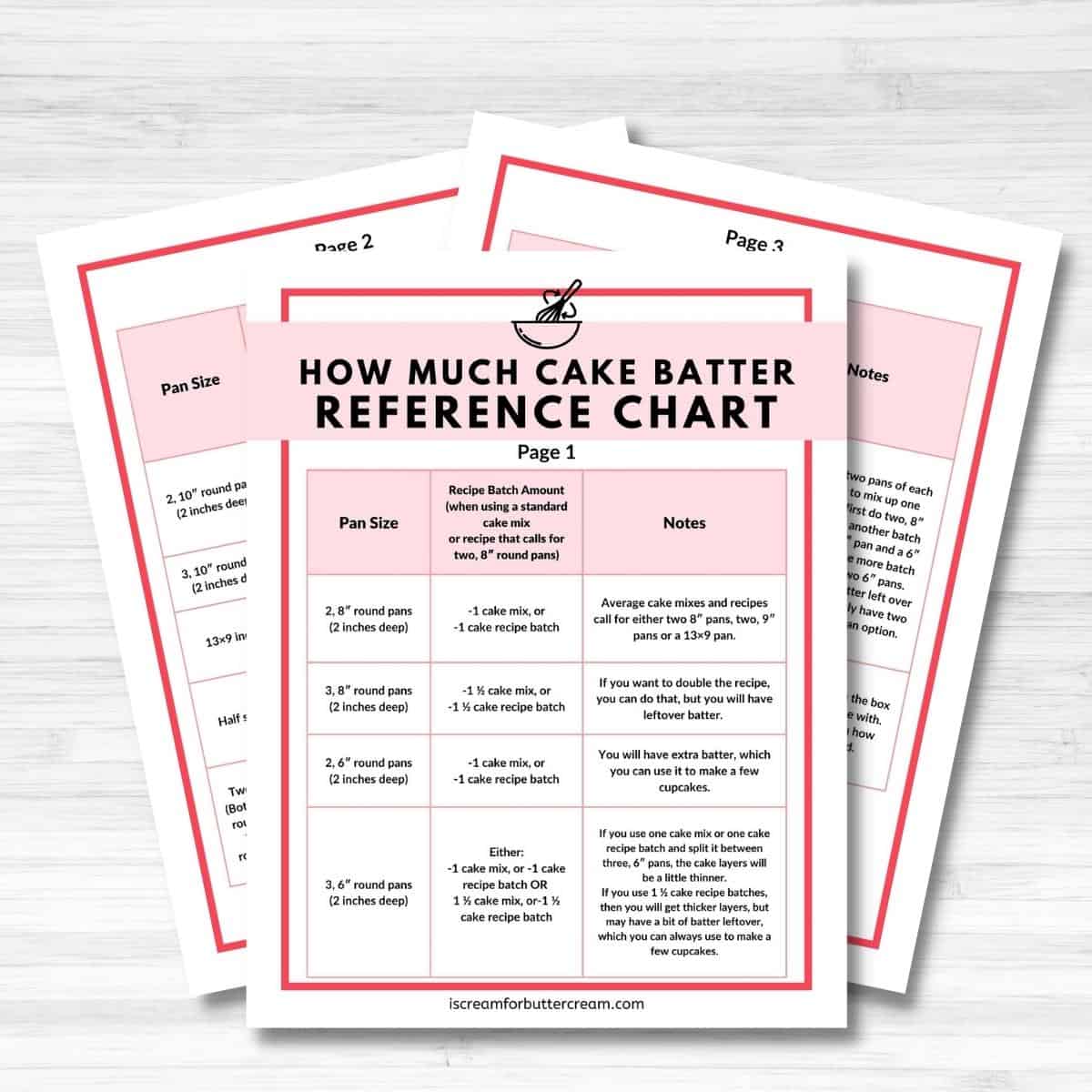
Josephine Mullane
How can I access the comments on your blog? Thanks.
Kara Jane
Hi there, I’m not sure what you mean. The comments show up at the bottom of each post. Since this post was just posted a couple days ago, there may not be many comments at all just yet. I also moderate comments before they are added to the post, so I can make sure it’s appropriate before it goes live on the website.
Jess
Thank you so much! It’s hard to find answers!
Kara
You’re welcome, Jess!
Mary Munzert
Thank you so much for this post! Great detail! It is so helpful especially for us “newbies” called upon to produce a tiered cake!
Kara Jane
Oh thanks Mary! I’m glad it’s helpful! 🙂
Arlette Payne
Hi Kara Jane,
I’m totally with you on batches instead of cups. I just could never figure that. I made up myself a nice chart like yours, and I also use area of pans to help me figure out how many batches I need for some odd pans. My issue is how long to bake the different pans sizes. Like if I made three six inches instead of the two eight…how does that affect baking time?? Can drive me bonkers. I sort of go by smell, sight and instinct as the minutes tick down…lol
Thanks again for your blog. You’ve helped me a lot. 🙂
God Bless, Arlette
Kara Jane
Love the idea of using the area of the pans! And yes, the baking times can really be a pain to try and figure out. I don’t know that there’s a good way either. I usually just figure if the pan is smaller, or thinner, I start checking sooner. I do the exact same thing as you do…just go by sight, smell and instinct. lol! Love it!
Patricia
Hi Kara Jane 🙂 I discovered your lovely site recently, and want to thank you also for including some boxed mixes along with your other wonderful creations! I have read this topic over but still have a question relative to a cake mix using 2 8″ pans that are 3″ deep, this is what I just purchased.
I know that a box mix makes 4 cups so my concern is …will it produce a cake that is not high enough because of the 3″ depth?
I have to confess I’m not an experienced baker, but your site has inspired me! Thank you! 🙂
Kara Jane
Happy to help Patricia! So you can still bake up a cake mix in two, 8″ pans that are three inches deep. You might watch them and pull them out of the oven a couple of minutes before the box says, if they start to over-brown a little though. I hope this helps!
Patricia Tondreau
Okay, thanks so much Kara Jane! 🙂
Sasha
How would I convert a batch that make 2 9”/8” cakes to a single 12” can pan? I tried one batch and it barely rose because there wasn’t enough batter, but how much more should I make? Thanks!
Kara
Hi Sasha, I would think that one full cake batch (written for two 8-inch round cake pans) would be enough to fill a 12-inch round pan about two inches tall. I’m not sure why it didn’t bake properly Was the pan taller than that? If the pan is a deeper pan, then you’d need more batter. It would just depend. I’m not sure what recipe you used either and some recipes make smaller amounts of batter, so it would depend on the recipe as well. I’d need maybe a few of those details before I could give a better estimate on how much batter. Also, when you bake in a large pan like that, sometimes it’s difficult for the middle to rise and bake as well as the edges. This could be part of the problem. I always use a heating core in the middle of any cake that’s 10 inches or larger. You can find them on amazon by just searching for ‘cake heating core’. Some people just use a flower piping nail in the middle of the pan, but that’s never worked as well for me. I’ve found that the heating cores works best for me and helps the cake bake evenly. If I don’t use one for bigger cakes, they just don’t come out the way I’d like them to. Hope this helps.
Sakendra Turner
Thank you Kara for always providing quality tips to us free of charge. I’m sorry that so many people are rude to you and don’t appreciate the small bit of happiness you are bringing to so many tables! I love your content! Also…. I miss the quarterly cake box club!!! Maybe one day it will come back!
Kara
Awe thank you so much! This comment made my day. 🙂 And I know…I really miss doing the cake box too. I wish that it would have gone over much better than it did. I could have kept doing it. It was tons of fun coming up with new themes and items for the box. Maybe some day I’ll try and resurrect it. 😉 Thanks again for the lovely comment. 🙂